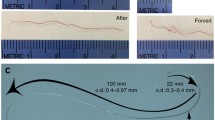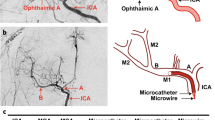Abstract
Stroke remains a leading global cause of death and disability. In the last decade, the therapeutic window for mechanical thrombectomy has increased from a maximum of 6 to 24 h and beyond. While endovascular advancements have improved rates of recanalization, no post-stroke pharmacotherapeutics have been effective in enhancing neurorepair and recovery. New experimental models are needed to closer mimic the human patient. Our group has developed a model of transient 5-h occlusion in rats to mimic stroke patients undergoing thrombectomy. Our procedure was designed specifically in aged rats and was optimized based on sex in order to keep mortality and extent of injury consistent between aged male and female rats. This model uses a neurological assessment modeled after the NIH Stroke Scale. Finally, the potential for translation between our rat model of stroke and humans was assessed using comparative gene expression for key inflammatory genes. This model will be useful in the evaluation of therapeutic targets to develop adjuvant treatments for large vessel occlusion during the thrombectomy procedure.






Similar content being viewed by others
Data Availability
Not applicable.
Code Availability
Not applicable.
References
Group GBDaI. Global burden of 369 diseases and injuries in 204 countries and territories, 1990–2019: a systematic analysis for the Global Burden of Disease Study 2019. Lancet. 2020;396(10258):1204–22.
Smith WS, Furlan AJ. Brief history of endovascular acute ischemic stroke treatment. Stroke. 2016;47(2):e23–6.
Nogueira RG, Jadhav AP, Haussen DC, Bonafe A, Budzik RF, Bhuva P, et al. Thrombectomy 6 to 24 hours after stroke with a mismatch between deficit and infarct. N Engl J Med. 2018;378(1):11–21.
Fraser JF, Maniskas M, Trout A, Lukins D, Parker L, Stafford WL, et al. Intra-arterial verapamil post-thrombectomy is feasible, safe, and neuroprotective in stroke. J Cereb Blood Flow Metab. 2017;37(11):3531–43.
Babadjouni RM, Walcott BP, Liu Q, Tenser MS, Amar AP, Mack WJ. Neuroprotective delivery platforms as an adjunct to mechanical thrombectomy. Neurosurg Focus. 2017;42(4):E4.
Griauzde J, Ravindra VM, Chaudhary N, Gemmete JJ, Pandey AS. Neuroprotection for ischemic stroke in the endovascular era: a brief report on the future of intra-arterial therapy. J Clin Neurosci. 2019;69:289–91.
Link TW, Santillan A, Patsalides A. Intra-arterial neuroprotective therapy as an adjunct to endovascular intervention in acute ischemic stroke: a review of the literature and future directions. Interv Neuroradiol. 2020;26(4):405–15.
Maniskas M, Bix G, Fraser J. Selective intra-arterial drug administration in a model of large vessel ischemia. J Neurosci Methods. 2015;240:22–7.
Maniskas ME, Roberts JM, Aron I, Fraser JF, Bix GJ. Stroke neuroprotection revisited: Intra-arterial verapamil is profoundly neuroprotective in experimental acute ischemic stroke. J Cereb Blood Flow Metab. 2016;36(4):721–30.
Salmeron KE, Maniskas ME, Edwards DN, Wong R, Rajkovic I, Trout A, et al. Interleukin 1 alpha administration is neuroprotective and neuro-restorative following experimental ischemic stroke. J Neuroinflammation. 2019;16(1):222.
Edwards DN, Salmeron K, Lukins DE, Trout AL, Fraser JF, Bix GJ. Integrin alpha5beta1 inhibition by ATN-161 reduces neuroinflammation and is neuroprotective in ischemic stroke. J Cereb Blood Flow Metab. 2020;40(8):1695–708.
Yushkevich PA, Piven J, Hazlett HC, Smith RG, Ho S, Gee JC, et al. User-guided 3D active contour segmentation of anatomical structures: significantly improved efficiency and reliability. Neuroimage. 2006;31(3):1116–28.
Davis SR, Collier LA, Goodwin SJ, Lukins D, Powell D, et al. Efficacy of leukemia inhibitory factor as a therapeutic for permanent large vessel stroke differs among aged male and female rats. Brain Res. 2019;3(1707):62–73.
Wang J, Zhang Y, Wolf R, Roc AC, Alsop D, et al. Amplitude modulated continuous arterial spin-labeling 3.0-T perfusion MR imaging with a single coil: feasibility study. Radiology. 2005;235:218–28.
Martha SR, Collier LA, Davis SM, Goodwin SJ, Powell D, Lukins D, et al. Early acid/base and electrolyte changes in permanent middle cerebral artery occlusion: aged male and female rats. J Neurosci Res. 2020;98(1):179–90.
Fraser JF, Collier LA, Gorman AA, Martha SR, Salmeron KE, Trout AL, et al. The Blood And Clot Thrombectomy Registry And Collaboration (BACTRAC) protocol: novel method for evaluating human stroke. J Neurointerv Surg. 2019;11(3):265–70.
Mehra M, Henninger N, Hirsch JA, Chueh J, Wakhloo AK, Gounis MJ. Preclinical acute ischemic stroke modeling. J Neurointerv Surg. 2012;4(4):307–13.
Gerber BO, Zanni MP, Uguccioni M, Loetscher M, Mackay CR, Pichler WJ, et al. Functional expression of the eotaxin receptor CCR3 in T lymphocytes co-localizing with eosinophils. Curr Biol. 1997;7(11):836–43.
Dairaghi DJ, Oldham ER, Bacon KB, Schall TJ. Chemokine receptor CCR3 function is highly dependent on local pH and ionic strength. J Biol Chem. 1997;272(45):28206–9.
Oppermann M. Chemokine receptor CCR5: insights into structure, function, and regulation. Cell Signal. 2004;16(11):1201–10.
Bishop KA, Wang X, Coy HM, Meyer MB, Gumperz JE, Pike JW. Transcriptional regulation of the human TNFSF11 gene in T cells via a cell type-selective set of distal enhancers. J Cell Biochem. 2015;116(2):320–30.
Li N, Liu R, Zhai H, Li L, Yin Y, Zhang J, et al. Polymorphisms of the LTA gene may contribute to the risk of myocardial infarction: a meta-analysis. PLoS One. 2014;9(3):e92272.
Clarke R, Xu P, Bennett D, Lewington S, Zondervan K, Parish S, et al. Lymphotoxin-alpha gene and risk of myocardial infarction in 6,928 cases and 2,712 controls in the ISIS case-control study. PLoS Genet. 2006;2(7):e107.
Mozaffarian D, Benjamin EJ, Go AS, Arnett DK, Blaha MJ, Cushman M, et al. Heart disease and stroke statistics–2015 update: a report from the American Heart Association. Circulation. 2015;131(4):e29-322.
SVIN Global Executive Committee. Mechanical thrombectomy for acute stroke: building stroke thrombectomy systems of care in your region – why and how? [White Paper]. The Society of Vascular and Interventional Neurology. 2020. https://www.svin.org/files/Final_formatted_SVIN_ White_paper_2020 _updated_references(1).pdf
Snelling B, McCarthy DJ, Chen S, Sur S, Elwardany O, Sheinberg DL, et al. Extended window for stroke thrombectomy. J Neurosci Rural Pract. 2019;10(2):294–300.
Lu A, Clark JF, Broderick JP, Pyne-Geithman GJ, Wagner KR, Khatri P, et al. Mechanical reperfusion is associated with post-ischemic hemorrhage in rat brain. Exp Neurol. 2009;216(2):407–12.
Martha SR, Cheng Q, Fraser JF, Gong L, Collier LA, Davis SM, et al. Expression of cytokines and chemokines as predictors of stroke outcomes in acute ischemic stroke. Front Neurol. 2019;10:1391.
Tokami H, Ago T, Sugimori H, Kuroda J, Awano H, Suzuki K, et al. RANTES has a potential to play a neuroprotective role in an autocrine/paracrine manner after ischemic stroke. Brain Res. 2013;1517:122–32.
Ai QD, Chen C, Chu S, Zhang Z, Luo Y, Guan F, et al. IMM-H004 therapy for permanent focal ischemic cerebral injury via CKLF1/CCR4-mediated NLRP3 inflammasome activation. Transl Res. 2019;212:36–53.
Martha SR, Collier LA, Davis SM, Alhajeri A, Grupke S, Fraser J, et al. Gene expression levels in acute large vessel occlusion stroke in humans. Stroke. 2019b. 50. https://doi.org/10.1161/str.50.suppl_1.WMP45Stroke. ;50:AWMP45.
Biscetti F, Giovannini S, Straface G, Bertucci F, Angelini F, Porreca C, et al. RANK/RANKL/OPG pathway: genetic association with history of ischemic stroke in Italian population. Eur Rev Med Pharmacol Sci. 2016;20(21):4574–80.
Kumar P, Kumar A, Misra S, Faruq M, Vivekanandhan S, Srivastava AK, et al. Association between lymphotoxin alpha (-252 A/G and -804 C/A) gene polymorphisms and risk of stroke in North Indian population: a hospital-based case-control study. Int J Neurosci. 2016;126(12):1127–35.
Acknowledgements
Beverly Meacham (Senior Radiology Technologist) and David Powell (Assistant Professor) with The Magnetic Resonance Imaging and Spectroscopy Center. NIH Shared Instrumentation Program Grant for the 7T ClinScan. S10 (1S10RR029541-01).
Funding
National Institute of Neurological Disorders and Stroke (5R01NS091146-04).
Author information
Authors and Affiliations
Contributions
SM performed surgeries, and SM and JF analyzed the data. KS wrote the manuscript with exception of methods (SM and JF). CM analyzed behavioral data. DL analyzed infarct and edema data. TH and AL analyzed the cerebral perfusion data. KRP, SM, and JF planned experiments and edited the manuscript. JFF performed human thrombectomy surgeries and JFF and KRP oversaw the formulation of the project and edited the manuscript.
Corresponding author
Ethics declarations
Ethics Approval
Not applicable.
Consent to Participate
Not applicable.
Consent for Publication
Not applicable.
Conflict of Interest
KRP and JFF co-founders of Cerelux, LLC.
Additional information
Publisher’s Note
Springer Nature remains neutral with regard to jurisdictional claims in published maps and institutional affiliations.
Rights and permissions
About this article
Cite this article
Messmer, S.J., Salmeron, K.E., Frank, J.A. et al. Extended Middle Cerebral Artery Occlusion (MCAO) Model to Mirror Stroke Patients Undergoing Thrombectomy. Transl. Stroke Res. 13, 604–615 (2022). https://doi.org/10.1007/s12975-021-00936-y
Received:
Revised:
Accepted:
Published:
Issue Date:
DOI: https://doi.org/10.1007/s12975-021-00936-y




